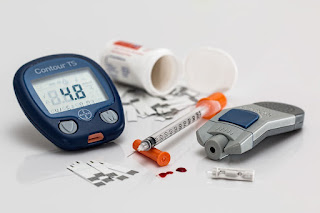Diabetes is a lifestyle illness which causes high blood sugar and can affect people at all ages. It happens when your body is unable to produce Insulin or use the produced Insulin.
Diabetes can be classified into two categories:
- Type 1 Diabetes
- Type 2 Diabetes
Type 1 Diabetes:
- In this, body stops producing insulin leading to a rise in blood sugar level.
- Usually affects children and teenagers and is not very common but is dangerous.
- Treatment generally involves taking insulin injections.
Type 2 Diabetes:
- This form of diabetes is the most common form of diabetes.
- In this, the body is unable to use the insulin which is being produced by the body leading to rise in blood sugar levels.
- Treatment generally involves taking regular medication, following a strict diet and regular exercise.
Common Symptoms of Type 2 Diabetes
Early detection of diabetes is important, as it conditions only worsen over time if remain untreated. The symptoms usually are mild, but these occur usually when the blood sugar levels become abnormally high. Below are some common symptoms that can help you evaluate if your blood sugar levels are elevated:
- Elevated thirst
- Increased hunger
- Extreme fatigue
- Increased urination, especially at night
- Blurred vision
- Sudden loss of weight
Depending on the type of diabetes, these symptoms may vary a bit for different diabetic patient.
Risk Factors for Diabetic Patients:
Below are certain factors which can increase your risk of getting diabetes:
- If you are overweight and not physically active
- If your age is above 45 years
- If you have a family history of diabetes
- If you have high blood pressure or cholesterol levels
Managing & Living with Diabetes
If you have been diagnosed with diabetes, and are unsure of how to manage it, below are some tips that can help you lead a healthy life with diabetes:
- Timely and regular monitoring of your blood sugar levels.
- Managing your weight and Body-Mass Index (BMI)
- Maintaining a balanced diet
- Avoid smoking and minimizing alcohol intake.
- Exercise regularly
- Getting regular full-body check-ups done (at least once per year)
- Taking the prescribed medicines on time

Comments
Post a Comment